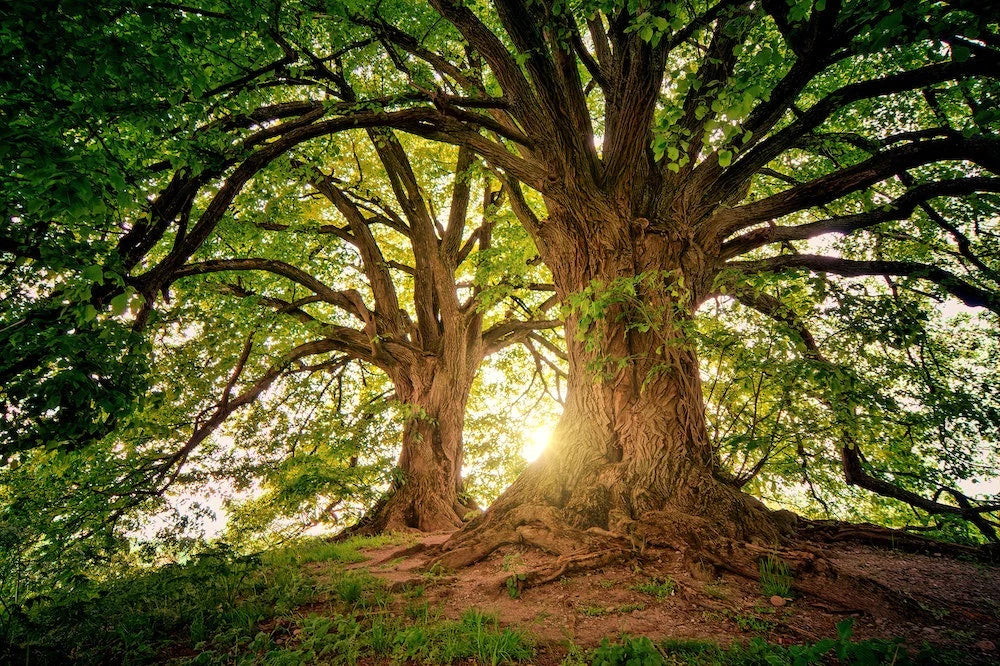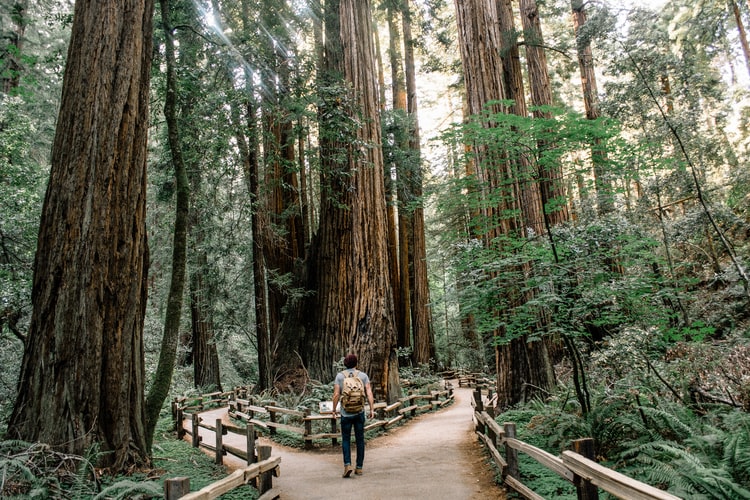
Get news, updates, & event Info delivered right to your inbox:
What is Forest Bathing?
Forest bathing, or Shinrin-Yoku, refers to the Japanese practice of spending time in nature for the purpose of relaxation and stress reduction. Spending time outside and connecting with the natural world provides many health benefits, including down-regulating stress hormones, lowering blood pressure, boosting immunity and improving overall well-being.
Forest bathing was first introduced by the Forest Agency of the Japanese Government in the 1980’s in an effort to acknowledge the healing properties of being in nature. They encouraged citizens to revitalize their health by visiting Japan’s green spaces and publicly owned forests.
Since then, forest bathing has gained popularity and has been adopted by people around the world due to its health benefits. It’s easy to do: all that’s required is trees, time, and a little mindfulness.
Want to try? Simply head to a forested area, find a comfortable place to sit, and bring your awareness to your breath, while observing the forest environment around you. According to research, the more natural the setting the better, as it will offer up more for your senses. However, if you don’t have access to a forest, you can get some of the same benefits from spending time in a city park.

Connecting with Nature
Nature and trees provide many benefits to humans; we just need to learn how to reconnect. We evolved with trees and have benefited from their food, medicine, shade, and shelter throughout our evolution.
But with the industrial revolution and the modernization that came with it, humans moved away from nature and have disconnected from the sights, sounds, and sense of peace that it offers — except for the occasional vacation or visit to a park.
As a society, we have paved over wetlands, sealed our homes against the elements, and limited our direct contact with the soils and textures of the natural world. But while we’ve been busy laying pavement and building up cities, nature has been busy, too — conducting the business of life.

Walking in the Woods
We aren’t meant to sit inside in front of screens all day, eat processed foods, or only get our nature from the view outside our window. We’re meant to “live in the sunshine, swim the sea, and drink the wild air,” as Ralph Waldo Emerson put it.
That’s where forest bathing, Shinrin Yoku, or the practice of “walking slowly through the woods, in no hurry, for a morning, an afternoon, or a day,” can help guide us back to balance. Coined in 1982 by Tomohide Akiyama, Director of the Japanese Forestry Agency, it’s a way back to ourselves.
Nature’s Healing Power
Studies have shown that when we’re exposed to nature, even for just a short time, it can lower our blood pressure, pulse rate, inflammation, and cortisol levels. It can also elevate our moods, and activate cancer fighting natural killer (NK) cells.
As a result, we might experience increased vigor and decreased depression, anxiety, fatigue, and mental fog. And those that are lucky enough to live near evergreen forests benefit from the high concentrations of phytoncides — or, airborne essential oils — that they release. These “showers” are part of the tree’s own medicine and provide powerful stress relief and a natural immunity boost that can last for weeks. Simply put: forests help us stay happy, relaxed, and well.

How to Start Forest Bathing
Ready to try forest bathing? Here are some steps to get you started:
- Head to the forest nearest to you, pocket your phone, and bring your awareness to your senses.
- Close your eyes and listen to the trees swaying and creaking in the wind.
- Feel that same wind moving over and through you. Listen to the life around you; birds calling, insects buzzing, trees shifting.
- Open your eyes and scan your surroundings, taking in colors and patterns, the interplay of light and shadow.
- Reach out and touch the trunk of a tree, feeling the bumps, the grooves, the bark beneath your fingers.
- Breathe deeply and smell the green understory plants, the sharp twang of evergreen, the sweetness of the soil.
- Pinch a fresh pine needle (which contains antioxidants and vitamin C) and place it on your tongue, tasting the forest.
- If you feel comfortable, remove your shoes and feel the solid earth beneath your feet.
If you can’t get to a forest, that’s okay: there are other ways to connect with nature. These include keeping plants in your home or workplace, taking the scenic route as often as possible, eating your lunch outside, or planting a garden. You can even play the soothing sounds of the forest from any device, close your eyes, and feel your worries ebb away.
And if you’re looking for a way to help ensure that there are trees for healthy forest bathing for many years to come, plant trees with us!
